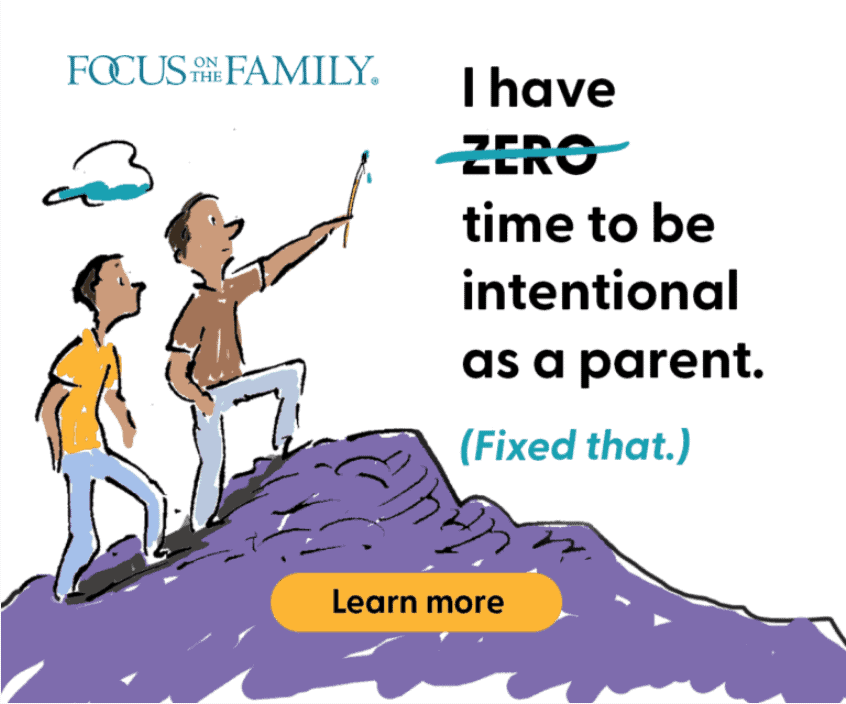I smiled at the girl in the window, grabbed the fast food bag, handed the change to my 12-year-old daughter, Amie, and drove away.
“Mom, she gave you a $5 bill and change. How much did you give her?”
“I think it was a $20,” I said, more interested in making it through the intersection on a yellow light than in Amie’s question.
“But the bill was for $18. She gave you too much change.”
Everyone in the car fell silent. In the back seat, two pairs of young eyes watched for my response. Amie glared from the front seat. My hands gripped the steering wheel. I knew it was a teaching moment, but we were late. People would be inconvenienced.
I sighed. “We have to go back. It’s not right to steal — not even a penny. The store will make the employee pay for her mistake if we don’t return the money. And we need to return it even though we have a lot of obligations.” I wasn’t sure if I was convincing my children or myself. After all, I knew I could go back later, but I turned the car around for them.
Integrity is not just about honesty or trustworthiness. Integrity involves every decision we make. It is about making the right choice for the right reason — not because of the praise we receive, but because it’s the right thing to do.
And it isn’t only about what we do in front of others; it’s about how we respond even when we’re alone, when no one sees or knows. It demands that we hold moral principles so dear that we stand for them when others walk away.
Raising our children to become people of integrity won’t “just happen.” They won’t learn if we don’t intentionally model and teach them. Here are some ways that I found worked well with my children.
Play “What if?”
One of my sons borrowed something from his brother without asking. When confronted, he didn’t think it was a big deal. He was careful. He didn’t keep it long. He returned it.
“What’s the problem? Why is this an issue?” he asked.
Answering his questions didn’t help him visualize the concept of boundaries and its close relation to stealing. He rationalized that he knew it would be OK with the owner, so why bother to ask?
I played “what if?” with him. “What if it had happened to you? How would you feel if someone entered your room and took something you prized without your knowledge or permission?”
He said he wouldn’t care. So I took it a step further.
“What if you continue to take what you want without any boundaries? Along the way you break something. Even though you replace it, one of us still feels our space was violated and we’re disappointed in you. What if you forget the item is in your room? You say you don’t have it, but later we discover it there. Even with an apology you’ve shown us you can’t be trusted.
“What if your behavior continues? You’re now 16 and want to take your dad’s sports car to homecoming. You know you have to ask for it. What do you think your dad would say?”
My son smiled. “Dad would say yes.”
“I know he would say no. You don’t respect us and you make up your own rules. He wouldn’t feel he could trust you with his favorite car.” I shrugged. “Maybe you’ll have a friend with a car when that day comes.”
He grew quiet and nodded. “You’re right. I see that even when I’m borrowing something without asking, that’s essentially the same thing as stealing. I’m sorry.”
He learned an important integrity lesson that day.
Sometimes playing “what if?” has clearly defined answers. But some issues of integrity deal more with those gray areas where making the right decision takes more thought, empathy and understanding. When you play “what if?” it’s important to lead your children into deeper concepts — especially those sticky areas that deal with integrity versus emotion.
Make sure you include some type of conflict in your questions. Such as, “What if you’re taking a makeup quiz and the teacher is called away. Would you copy answers from her desk? Who would it hurt? What if one of your friends saw you cheating?”
Encourage your children to be completely honest about their conflicting emotions, and let them know that sometimes the right answer won’t be the most popular. Be a cheerleader when their answer spotlights integrity.
It’s important for our kids to not just grasp the right thing to do, but also to put themselves in the other person’s shoes. How would that other person feel? How does our choice affect them?
When we can get our children to consider the person who would be most hurt in a “what if?” situation, then we can help them find a wise solution.
Tell a story
Sometimes children need more than just questions. Sometimes they need to see the whole picture from beginning to end.
My children would often have sleepovers with their friends. As they grew older, I became more concerned about how they responded to their friends’ decisions.
So I created “word pictures” — a personal, fictional story that included my children and their world — to help them grasp abstract integrity ideas.
For instance, Amie wanted to visit a friend, and I knew that friend had different ideas about what was OK to watch on television. So I created a story for Amie.
“Amie, let’s suppose you are at your friend’s house and she wants to watch a movie we’ve said was unacceptable. You decide to watch it and not tell us. That night you have a nightmare and can’t sleep. The next morning you’re irritable and fight with your brothers. You also begin to question Christian motives just like the girl in the movie. You find it’s hard to ask your dad and me your questions because you feel guilty about your decision. You feel you have to hide your disobedience and your problems.”
With one story I brought the results of dishonesty and guilt into Amie’s world. She then understood the why of what she had to do.
Help your children imagine how a decision will play out from beginning to end. Include the difficulties, range of emotions, mistakes and accolades so they can explore the gray areas of integrity.
Integrity at work
Back at the restaurant, rather than go through the drive through, again, we parked and walked into the restaurant. I asked for the young lady serving at the window.
I showed her my receipt. “I bought this and gave you a $20 bill. You gave us this five and some change. Can you give us the right change?”
Her eyes misted over. She ran to her register and returned with the right amount. “Thank you! I’m sorry. My uncle died today. We were close and I’m having a hard time.”
I squeezed her hand and told her we would pray for her and her family.
No one talked on the ride home. When we pulled in the driveway, Amie broke our silence. “Thanks, Mom. I’ll never forget her face.” The boys agreed.
Through demonstrating integrity in our actions, we had made one person’s painful day better.



















